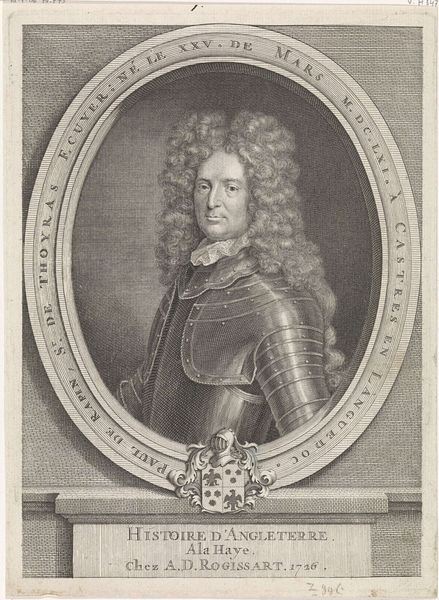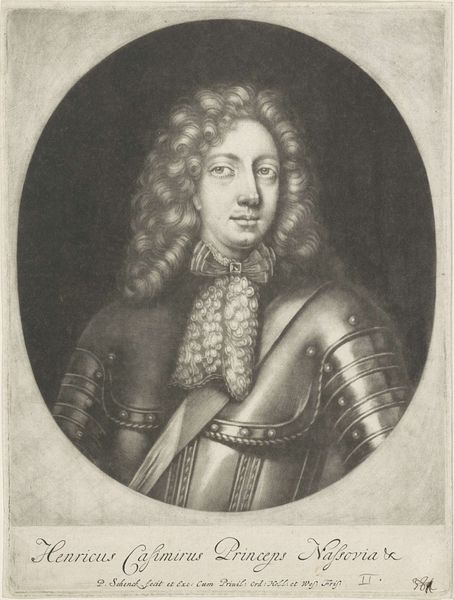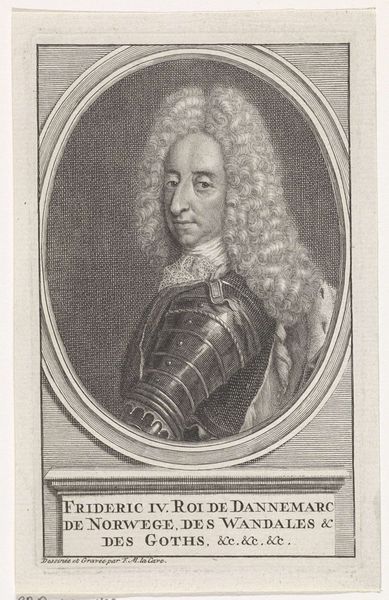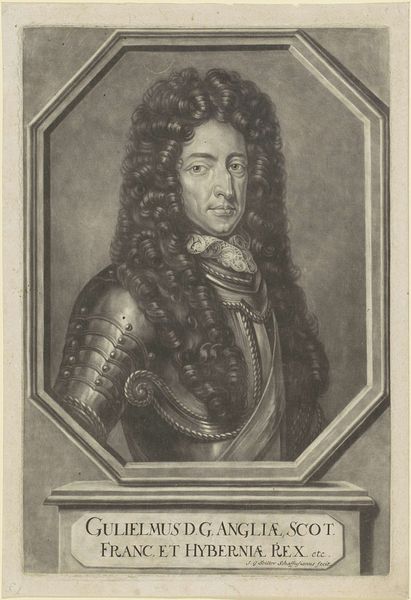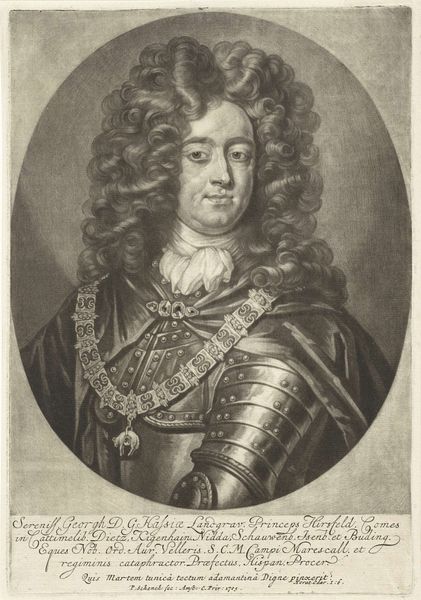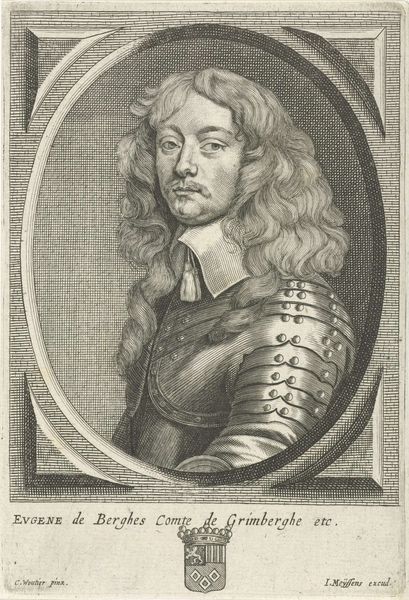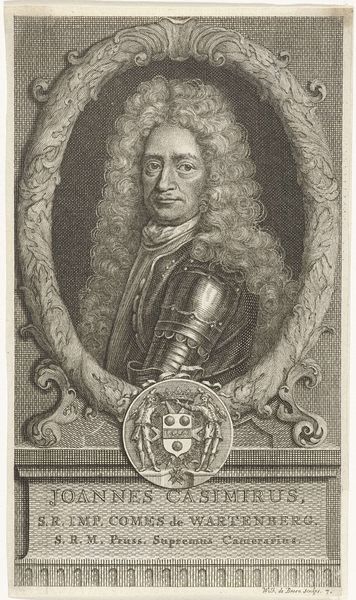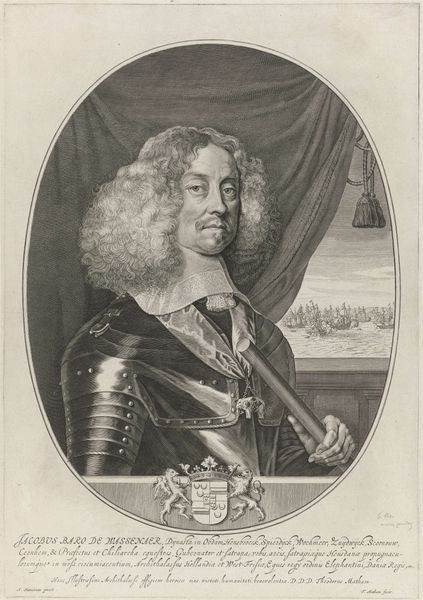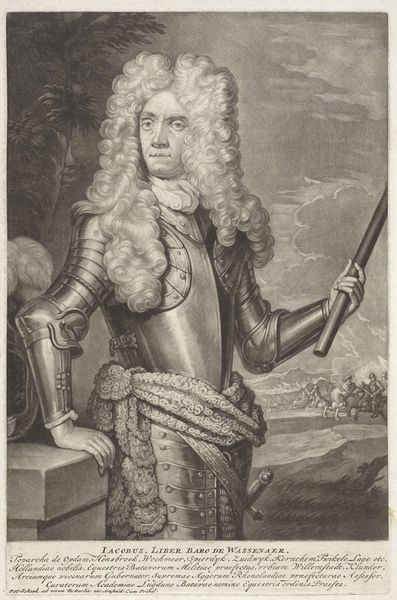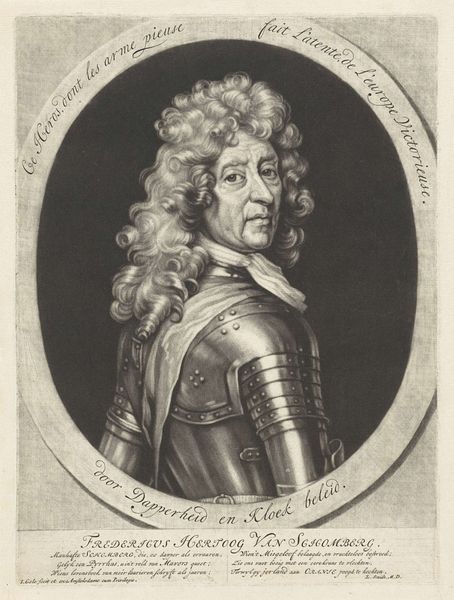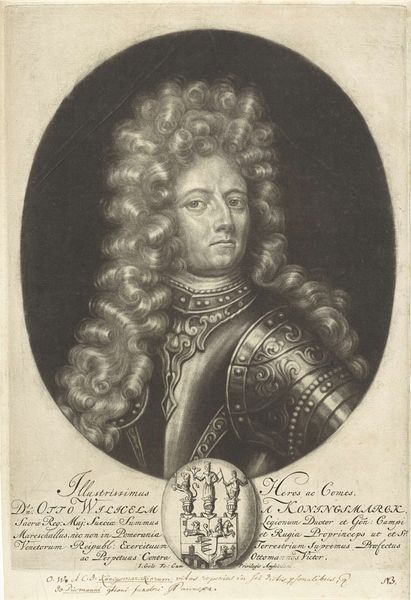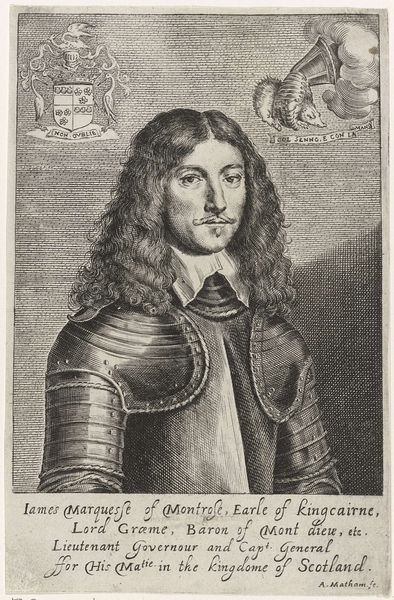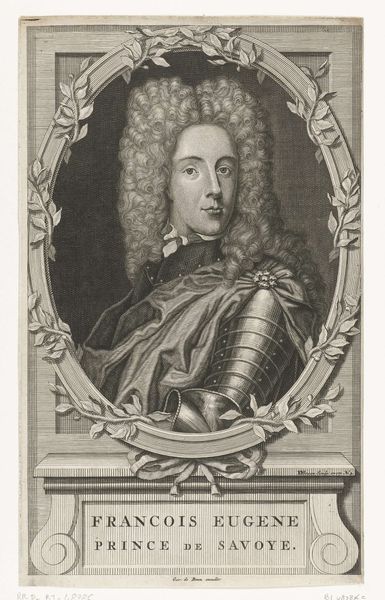
print, engraving
#
portrait
#
baroque
# print
#
old engraving style
#
portrait reference
#
portrait drawing
#
history-painting
#
engraving
Dimensions: height 230 mm, width 165 mm
Copyright: Rijks Museum: Open Domain
Curator: Here at the Rijksmuseum, we have a striking engraving titled "Portret van Paul de Rapin de Thoyras" created in 1725 by Jacob Houbraken. Editor: The first thing that hits me is the density of detail, especially in the wig and armor. The textures created by the engraving are remarkably rich. Curator: Indeed. Paul de Rapin was a Huguenot historian, and Houbraken's print served as the frontispiece for Rapin’s "History of England," solidifying his historical image. Notice the text encircling the oval frame. Editor: Yes, framing is key here. It constrains the chaotic wig and the severe armor. It also makes you think of it almost as a coin depicting a notable person. Also, consider the use of light and shadow; the engraver masterfully uses light to sculpt Rapin's face and the metallic surfaces. Curator: That brings out Rapin's expression doesn't it? Calm, confident—exactly how a historian would want to be perceived, but the armour signifies his military past too. This portrait operates as visual propaganda of sorts. Rapin’s history was influential in shaping Whig political thought in the 18th century. Editor: Propaganda, maybe, but its success surely relies on those compelling visual qualities. The way the artist modulated line thickness to capture light reflecting off the armor creates volume and depth. The ornate text banner and crest add to a grand sense of history and occasion. Curator: Absolutely. Houbraken capitalized on a demand for accessible historical narratives. These prints democratized knowledge. This was the age of enlightenment and a surge of public interest in English history, particularly on the continent. Editor: It all harmonizes through controlled composition. You feel how effectively these artistic elements synthesize history, power and personality to the public, across different social levels, which were able to purchase copies of this artwork. Curator: A fine portrait and cultural artefact indeed. Editor: Yes, a technical achievement that invites us to analyze further than simply the subject that is depicted.
Comments
No comments
Be the first to comment and join the conversation on the ultimate creative platform.
